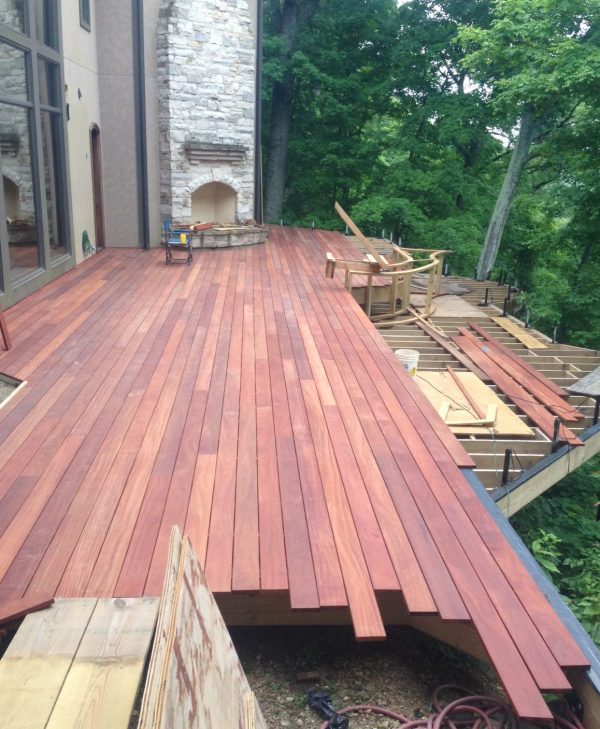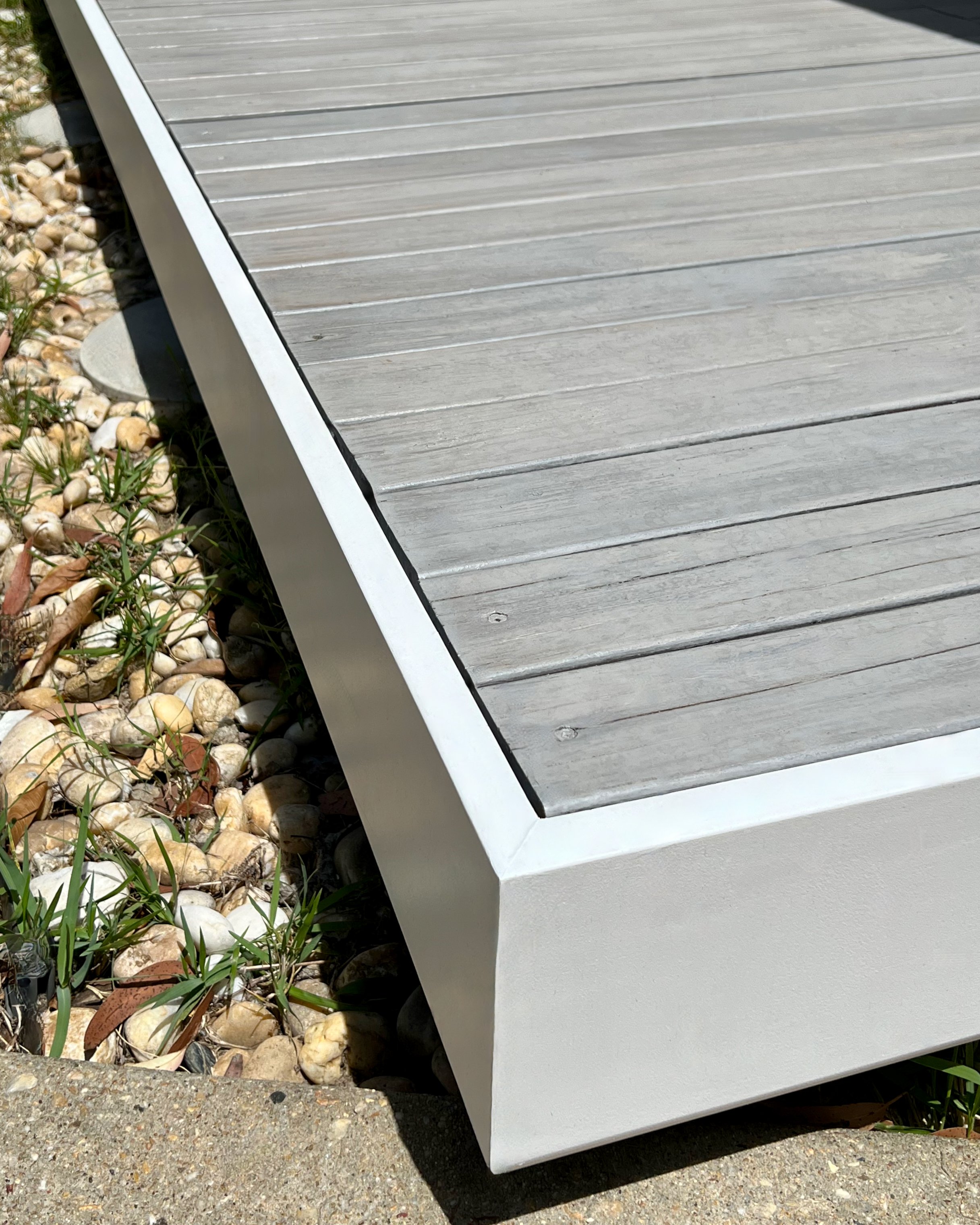The demand for custom deck installation Austin is growing rapidly as outdoor living trends rise.
The demand for custom deck installation Austin is growing rapidly as outdoor living trends rise.
Blog Article
Just how to Pick the Right Materials for Your Deck Setup Project
Choosing the ideal products for your deck installment job can appear overwhelming. There are many factors to consider, from durability and maintenance to aesthetic appeals and ecological influence. The choice in between standard timber and composite products, each with its very own set of benefits and disadvantages, can be especially difficult. The secret is to balance your budget plan, style preferences, and lifestyle needs to develop a deck that will certainly improve your outside space for years to come.
Recognizing the Different Kinds Of Deck Products
When beginning on a deck installment job, the choice of materials ends up being a pivotal decision. Composite products, on the various other hand, are a mix of wood and plastic, supplying sturdiness and resistance to weather elements. By comprehending these distinctions, house owners can make a more educated decision on the most appropriate deck material for their details demands.
Assessing the Durability and Upkeep Demands of Deck Products
Evaluating the sturdiness and upkeep demands of deck products is a crucial action in deck installment. Toughness entails the material's ability to stand up to severe weather conditions, wear and tear, and its durability.
Recognizing upkeep needs is just as important. Some products require regular sealing or discoloring to keep their look and stand up to wetness damage, while others, like composite outdoor decking, demand much less upkeep. By reviewing these variables, one can choose one of the most appropriate outdoor decking material, ensuring an equilibrium between durability, upkeep needs, and visual appeal.
Price Analysis: Contrasting Timber and Composite Decking
Although cost may initially seem like a secondary issue, it is a substantial variable when contrasting timber and composite decking. On the other hand, composite decking, while costlier originally, calls for less maintenance, potentially reducing lasting expenses. Potential deck owners must consider their spending plan and readiness to keep their decks when determining in between timber and composite decking.
Aesthetics and Design Flexibility of Decking Products
While price is a crucial consideration, the aesthetic allure and layout versatility of decking materials additionally play a considerable role in the decision-making procedure. Various materials provide varying degrees of visual charm. Natural wood decking supplies a timeless, timeless look, while composite materials use a broad array of colors and appearances to suit varied tastes and styles. In a similar way, style adaptability refers to the capability to shape and control the outdoor decking material to satisfy specific style needs. Timber, as an example, provides high layout flexibility because of its ease of reducing and forming. Composite materials, while much less flexible in layout, are still adaptable enough for a lot of deck designs. These elements, as a result, are important determinants in the selection of decking material.
Environmental Impact of Decking Materials
When choosing decking products, one must consider not just aesthetic appeals and durability, yet additionally the ecological effect. It is necessary to that site examine the sustainability of products and check out recycled decking options. Furthermore, understanding the possible influence on regional environments will guarantee a more environmentally responsible selection.
Assessing Product Sustainability
In the world of deck construction, assessing product sustainability is a vital step. This entails examining the environmental influence of each prospective material, taking into consideration aspects such as the energy needed for its production, its carbon impact, and its end-of-life disposal or recycling alternatives. Timber is a sustainable source, however unsustainable logging practices can lead to logging. Composite decking materials often integrate timber and plastic, decreasing the need for new hardwood however increasing dependence on fossil fuels. Light weight aluminum and other steels may be a lot more durable and recyclable, however their removal and processing can be energy-intensive. Hence, the choice of decking materials need to stabilize performance, aesthetics, expense, and sustainability to guarantee a liable and lasting installment.
Recycled Outdoor Decking Alternatives

Compound decking is particularly popular due to its toughness and convenience of upkeep. Recycled plastic decking, on the other hand, is extremely resilient and calls for very little upkeep.

Impact on Local Ecological Communities
While the benefits of making use of recycled materials for outdoor decking can not be overemphasized, it's equally essential to take into consideration the wider ecological effects of these options. Proper disposal of old decking is vital to reducing garbage dump waste. Basically, an eco-conscious deck job needs cautious product choice, sustainable sourcing, and accountable disposal.
Making Your Decision: Tips for Choosing the most effective Deck Materials
As the write-up transitions into the subtopic of "Making Your Decision: Tips for Picking the Best Deck Materials", it is important to understand the variety of deck products available. Striking a balance between durability and looks is crucial in this choice procedure. The adhering to discussion will assist viewers in making an informed option based on these essential factors to consider.
Understanding Different Deck Products
The job of picking the best materials for your deck installment can appear discouraging due to the vast range of choices offered. Vinyl or PVC decks are also a lot more durable and call for much less maintenance than composite materials, but More hints they can look much less all-natural. Light weight aluminum decks are strong, lightweight, and immune to rot, but they are likewise the most expensive option.
Resilience vs. Looks Balance
Balancing longevity with aesthetics can be a difficulty when selecting deck products. The decision commonly steams down to personal preferences and the deck's intended use. High-traffic locations may necessitate durable materials like composite outdoor decking, which withstands wear and tear but may do not have the natural beauty of wood. On the various other hand, timber supplies a timeless allure and heat that artificial products battle to replicate. Nevertheless, it needs a lot more upkeep and may not last as long. Homeowners need to strike an equilibrium, considering both the deck's functional demands and their aesthetic choices. By doing so, they can guarantee their deck stays a useful and appealing exterior space for several years to come.
Conclusion
To conclude, choosing the appropriate products for your deck setup task calls for cautious factor to consider of variables such as durability, upkeep, price, aesthetics, and environmental influence. Whether you opt for standard wood or composite materials, your choice should align with your spending plan, style choices, and way of living. Inevitably, the very best outdoor decking material is one that boosts your exterior room and gives enjoyment for several years ahead.
Report this page